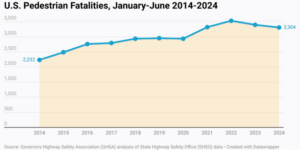In the United States, severe convective storms (SCS)—also known as severe thunderstorms, which can include tornadoes, hail and strong localized wind gusts—cause average annual insured losses of more than $12 billion. Actual annual losses fluctuate from year to year, and in 2011, severe thunderstorm losses in aggregate exceeded $27 billion with two major events costing more than $7 billion each. (Source: 2016 Munich Re, NatCatSERVICE; Property Claim Services; Insurance Information Institute)
Executive Summary
Catastrophe models for severe convective storms have existed for decades, but the model loss estimates lack credibility for most insurers. Here, Karen Clark explains why and suggests a new modeling approach.Wind losses are now responsible for well over a third of all losses for U.S. property insurers, and individual severe thunderstorm events routinely cause more than $1 billion in damages. While this is not a big number for the industry as a whole, severe thunderstorms are typically localized events, which means individual insurers can be impacted disproportionately. Even though these events occur every year and insurers have a wealth of claims data, there’s still a lot of uncertainty surrounding the “tail” of the distribution and the potential for and probability of large losses.
























